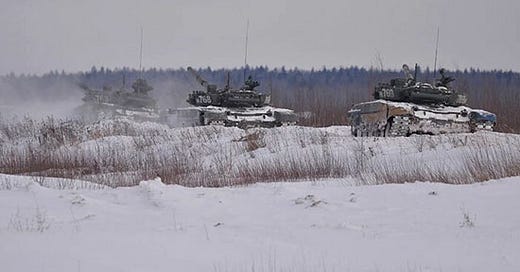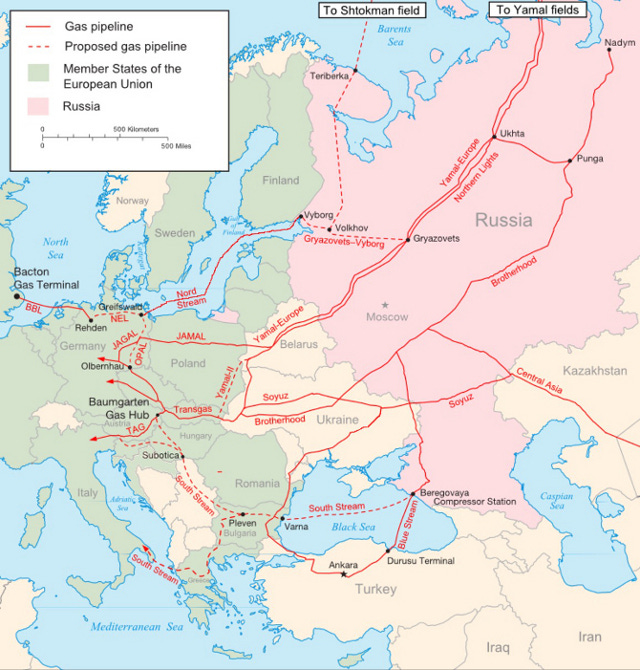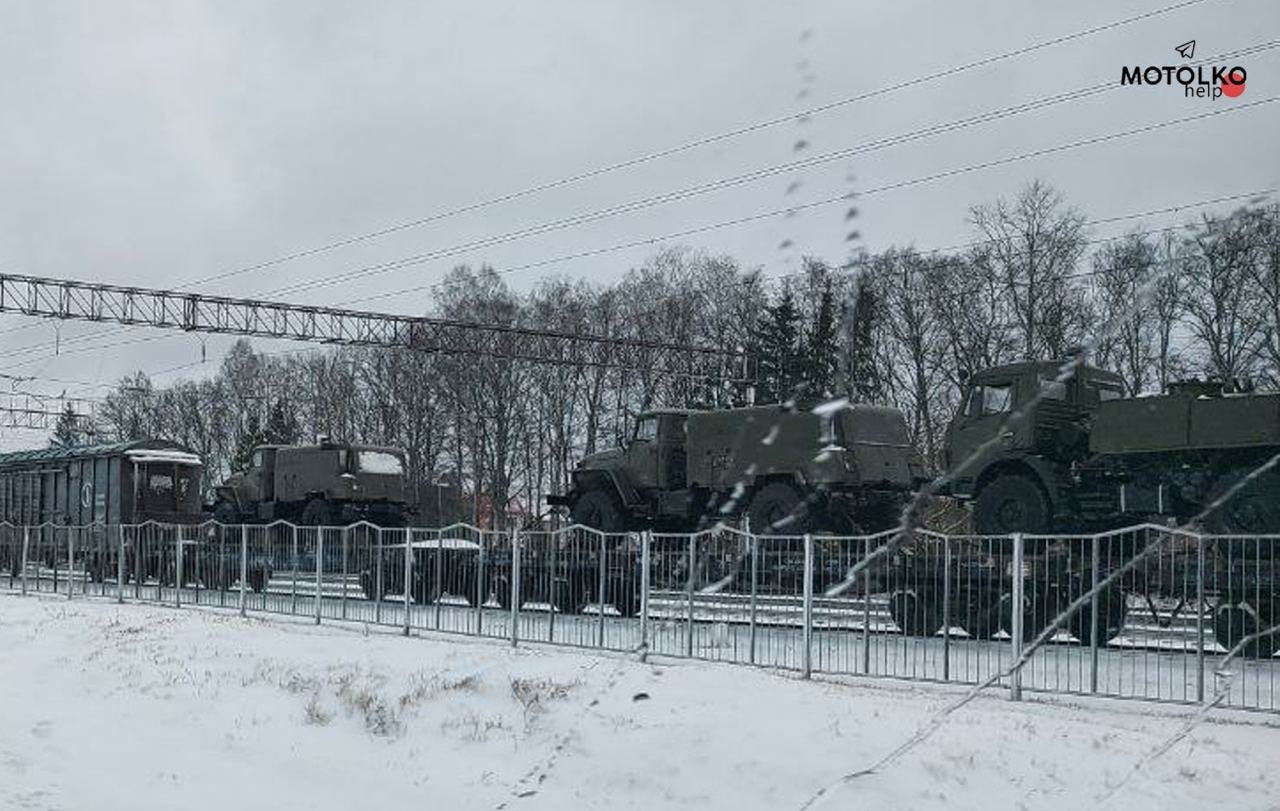The likelihood is that Russia will invade Ukraine, here's why and what the objectives are likely to be.
Russia has deployed an estimated 100,000-125,000 troops - around 75% of Russia’s total ground combat power – to Ukraine’s eastern borders. President Putin has issued demands and threats to Ukraine and NATO, has launched swathing cyber attacks against Ukraine, and has increased the rhetoric aimed at his domestic audience. All the signs are that the Kremlin is poised to strike, but will they and, if so, at what and why?
(Photo: Russian Ministry of Defence. Training inside the Russian Federation)
In addition to the Black Sea deposits in Crimean waters, Ukraine has massive gas reserves in the east of the country, in particular the huge Yuzivske field. With these deposits, Ukraine holds 5.4 trillion cubic metres of gas, the third largest reserves in Europe.
When Russia occupied Crimea in 2014 Ukraine lost, and Russia gained, the huge gas deposits under the Scythian section of the Black Sea Shelf.
The Black Sea Shelf deposits had been under exploration for several years and Ukraine finally awarded the licences for their exploration in August 2012. Ukraine did not possess the technology or expertise to exploit the deposits itself (they are very deep), and so the contracts were inevitably going to go abroad.
Given the very close association between then Ukrainian President Viktor Yanukovych and President Putin, the Kremlin expected the contracts would be issued to the Russian energy giant, Gazprom. But the Kremlin should have foreseen a problem. Until the Russian occupation of Crimea and the Donbas in eastern Ukraine, Ukraine imported almost all its gas from Gazprom. Gazprom had, in turn, imposed numerous price hikes on Ukraine and Ukraine’s gas distributor Naftogaz, had struggled to pay the bills. By 2014, Naftogaz owed Gazprom US$4.5 billion. Because of the repeated price hikes and resulting tensions between Gazprom and Naftogaz, Ukraine had been trying to establish other, non-Russian supplies. It turned to Europe for them, and when the contract licences were issued for exploitation of Ukraine’s on gas they went not to Gazprom and Russia, but to a group led by American ExxonMobil but including Dutch-British Royal Dutch Shell and Romanian OMV Petrom, working with the Ukrainian state company Nadra.
In the meantime, as I say, Ukraine was looking to diversify its gas supply. Here enters the European Union and one of the causes of Russian anger towards the EU.
Europe at the time (2013) imported around 39% of its gas from Russia (in 2019 it was 41.1%) and much of the gas that Ukraine wanted to import from the EU was in fact re-directed Russian gas. Gazprom contracts with EU energy importing companies forbade such redirection and resale, but in 2006 these clauses were removed because they infringed Article 81 of the European Community Treaty (on restrictive business practices). Legally this meant that European companies had every right to re-export gas, no matter where they’d got it from. Indeed, Ukraine now imports most of its gas from Hungary and Poland. But, can anyone really see President Putin accepting such a thing passively?
As an aside, consider the Russian involvement in resisting the pro-EU Maidan protests in Kyiv 2013 in the context of access to Ukrainian gas. Access to the Ukrainian gas fields is a large part of the reason the Kremlin was and still is so sensitive about Ukraine cozying up to the European Union.
So, when, in 2014, Russia occupied Crimea, Ukraine lost the Black Sea hydrocarbon fields of Bezimenne, Odeske, Arkhangelske, Shtormove, Schmidta as well as the Zakhidno-Golitsynska, Kulisna and Dnieper paleochannel fields that were then under promising exploration.
Then, if we look at the fighting in the east of the country in 2014, Ukraine nearly lost the town of Slovyansk to Russian backed rebels of the so called ‘Lugansk and Donetsk People’s Republics’. Slovyansk was the first town to be taken by the rebels and was then recaptured by the Ukrainian army in 2015. Why is Slovyansk important and why was it the first objective of the rebels? Because it’s in the centre of the massive Yuzivska gas field.
(Photo: www.polgeonow.com)
But let’s look briefly at what would have happened if Russia had NOT occupied Crimea and the Donbas?
- Ukraine would have become energy independent
- Europe would have been able to source a new, less politically and economically problematic and uncertain gas supply than Russia – Ukraine – and would become largely gas independent of Russia.
- In losing all or part of the European energy market to Ukraine, Russia would have lost significant revenue.
- In losing its energy hold over EU Member State economies, Russia would have lost significant economic and political leverage over Europe.
- Putin might perceive that if his leverage over Europe were weakened, he’d look less of a strong man at home and his political base may potentially be undermined as a result, providing the political opposition in Russia with opportunities.
However, by occupying Crimea Russia:
- Mitigated the above risks.
- Gained ‘ownership’ and control of the massive Black Sea Shelf gas deposits, thereby extending its ability to gain revenue and exert economic influence over the EU and its Member States.
If Russian Rebels had also retained control of Slovyansk:
- Russia would have secured even more massive gas reserves for itself, denying them also to Ukraine and the EU, thereby extending even further the Kremlin’s economic and political leverage over EU Member State economies.
So, why might Russia initiate hostilities in again in Ukraine?
In fact, hostilities between Ukraine and Russian backed rebels in the east have never quite ceased. But, if we assume, based on the above, that the Kremlin’s objective in 2014/15 was to secure Ukraine’s gas deposits in the Black Sea and east of the country, so as to extend and maintain economic and political leverage over EU economies…
…and if we assume that those objectives were not fully reached i.e., pro-Russian rebels failed to retain their occupation of Slovyansk and therefore control over the massive Yuzivska gas field…
…then yes, hostilities at some point are likely.
The likelihood grows significantly when one considers the conflict indicators:
Combat indicators
lost significant economic and political leverage over Europe.
- 100,000-125,000 Russian troops massed on Ukraine’s border.
- Very recent deployments of Russian troops to the Belarus/Ukraine border (northern Ukrainian border)
- The rhetoric and threats – preparation of the political and diplomatic battlefield? – coming out of the Kremlin.
Putin’s options
As I see it, President Putin has five options, in order of risk and sequence:
Do nothing.
Drive military forces into the rebel held areas of eastern Ukraine and bring those areas into the Russian Federation, much as he did in South Ossetia and Abkhazia in Georgia, and as he did with Crimea. The objective being to consolidate gains made in 2014, and to secure Russian control.
Option 2. but projecting beyond the boundaries of the present area under pro-Russian control to occupy the area up to the furthest extended of the 2014 front line, including Slovyansk, in order to access and gain significant control of Yuzivska gas field deposits.
Option 2 or 3, with the addition of driving a land corridor along Ukraine’s coast with the Black Sea, in order to connect Crimea with the occupied areas of the Donbas and with Russia itself.
Invade the whole of Ukraine.
Risks:
Option 1
Putin has deliberately ramped up rhetoric at home as well as abroad, even stating, entirely and completely falsely, that “what is going on in the Donbas almost amounts to genocide”. In doing so, he consciously, deliberately, triggering growing calls from Russian people and politicians that he acts to do something about it. So, the option of doing nothing carries significant risk of him losing support at home. He could also face criticism from within the military. In deploying so many army units to the Ukrainian border from deep inside Russia, he has built up anticipation amongst the military that may turn into criticism if he simply sends them all home again. He can’t keep mobilising his military and standing them down again without using them without causing some harm to the moral of his soldiers.
Furthermore, having issued demands to NATO, demands he would have known NATO could not agree to, he will now risk looking weak in the eyes of the West and his domestic audience if he now backs down.
Option 2
Carries very little risk. The areas of the so called Lugansk and Donetsk People’s Republics is already under de-facto Russian occupation, and outside sensible Ukrainian military reach.
The move would lead to very little fighting, if any, and would, despite the inevitable international outcry and huge concern amongst the Baltic States, be seen pragmatically by the West as simply confirming the practical reality of the present situation.
Option 3
Would result in geographically limited war with Ukraine. The military outcome is pretty much a certainty: Russian troops will gain their objectives. However, the increasingly capable and well equipped Ukrainian armed forces will fight and will inflict significant casualties on the Russian armed forces – remember, they eventually managed to push the Russian backed rebels back from many of their 2014 military gains.
The international response would be significant. Indirect western military support to Ukraine would almost certainly increase, but the response to the Kremlin would be limited, consisting of primarily economic and political measures, not military ones.
Thus, if President Putin is prepared to accept large numbers of Russian casualties, he may judge that gaining access to the Yuzivska gas deposits and, in doing so, strengthening his hand against the EU, the would be worth it.
Option 4
Would bring all the benefits Option 3, plus that of not only consolidating the Donbas under Russian control, but also of possibly easing the logistical effort of supporting the Crimea and of transporting gas from Crimea, via land, to the Russian Federation network, freeing up Russian supplies for potential export to China and the East.
But Option 3 would likely trigger all-out war with Ukraine. Whilst Russia may be able to drive a corridor through to Crimea in a matter of a few days, defending that corridor will require a massive and long-term effort that will significantly drain the Russian treasury of blood and money, which in turn will be very unpopular and cause inevitable political problems for him at home. Furthermore, if he pursues Option 3, Western powers will likely provide very significant indirect support – weaponry, equipment, expertise and training – to Ukraine, sustaining the inevitable fighting and deepening the military, economic and political risk to Putin.
My own belief is that Putin will not wish to court the risks associated with having to maintain such a corridor when it will, without doubt, be subjected to constant attack.
Option 5
Russia is a major military power, however, Option 5 would lead to an all out war with Ukraine. It is highly questionable that the Russian people would support such a war and the west is certain to provide huge indirect economic and military support Ukraine. Furthermore, the bulk of Ukrainians have become very hostile to Russia and occupation of swathes of the country would be subject to constant and highly effective resistance, again supported by the west. Putin knows this and, likewise, will realise that sustaining an occupation under such circumstances would be nigh on impossible. If he had to withdraw, his political career and reputation at home would be destroyed.
Conclusions:
1. The conflict between Russia and Ukraine was always about gas.
2. The Kremlin failed to gain all of its objectives in the 2014/15 fighting, specifically, it did not gain access to the Yuzivska gas field.
3. President Putin is likely to give the order to attack Ukraine
I haven’t presented my analysis on timelines, but he can’t keep his troops on the border indefinitely, therefore I’d be surprised if he waits any latter than mid-February and would expect him to move before the end of January. Snowfall and the incredibly cold weather may have a role in the decision making and it is worth noting that clearer and slightly armer weather is forecast from 21st January to 25th January.
4. The objectives of such an attack will, most likely, be limited to those in Option 2 or 3 above.
A Russian invasion of Ukraine should be good news for Boris Johnson. Finally, the UK media might stop obsessing about him having had a drink in his garden and will have something else to talk about. I always live in hope that the media will one day stop pursuing political agendas and start reporting objectively on the broader news.







You want the media to stop being political and honestly report news? You must be joking.
Very good and detailed analysis. I had thought that Putin would attempt to seize Kyiv quickly, set up a puppet government and, with the Ukrainians demoralised, then mop up the rest of the country. This on the ground that he's going to face moral opprobrium anyway for the invasion, so he might as well grab the lot.
But your analysis that he's more likely to only seize parts of it makes sense.